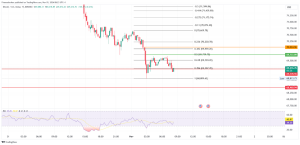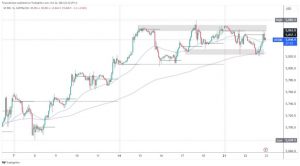
Back-to-storms Barely Move Oil Prices
While the oil industry starts to make past the pandemic-induced sluggish demand in recent weeks, another crippling circumstance appears.
Hand in hand, two tropical depressions set to wreak havoc at the Gulf of Mexico, the melting pot for a significant amount of the region’s crude oil production.
In the past, production shutdowns result in panicky demand, thereby driving prices up. Such is not the case in the COVID-stricken United States. Many citizens are either working from home or not working at all due to successive layoffs.
Oil and gas production firms make early preparations. Almost 58% of oil production and 44% of gas production were cut from the Gulf of Mexico. This translates to roughly 1.1 million bpd of production.
Oil prices rose modestly at a 1% increase, sending a barrel to $44.83. However, this low jump is primarily driven by a renewed hope for COVID-19 treatment, and not by higher demand.
Consequently, oil futures rose marginally.
West Texas Intermediate October futures rose 0.5% or 23 cents, driving barrel price to $42.57 on NYMEX.
While the global benchmark Brent Crude futures rose slightly higher by 1%, translating to 43 cents. The October deliveries of Brent played at $44.78 per barrel in the ICE Futures Europe.
An industry expert notes that the conservative movement in oil prices is somewhat disappointing, as shutting off the same amount of output in the past would drive prices to sky-high.
Nevertheless, the production cut will give traders some breather. Recently, global oil production is on the rise even with a lagging demand, weighing prices down.
 Volatile Week Ahead
Volatile Week Ahead
Crude oil prices edged better in the global market in the last three weeks due to the significant production limits set by energy industry frontrunners.
Even if the industry is recovering, it is still far from the threshold it could have hit if the COVID-19 did not impede demand.
Apart from the Middle East, the Gulf Coast is the next most crucial energy hotspot globally.
More than 17% of US oil production and 5% of its natural gas output come from the Gulf Coast region. With the halted productions comes volatile oil prices in the week ahead.
Similarly, the downward trajectory in price is driven by OPEC + members’ overcoming supply targets, including Russia, for the period May to July.
This will result in cutting production output by over a million barrels per day to compensate for the surplus, or else prices will fluctuate to out of control levels again if production is not regulated.
There is too much supply cushion, and high demand destructions, experts note.
At the latest quotations, WTI traded at 0.68% higher at $42.63 per barrel, while Brent is up by .70% at $44.66.
Investors could hope that support from concerns in the Gulf of Mexico, together with a slow but steady economic rebound by the US, will drive prices up to their target value.

 Volatile Week Ahead
Volatile Week Ahead
